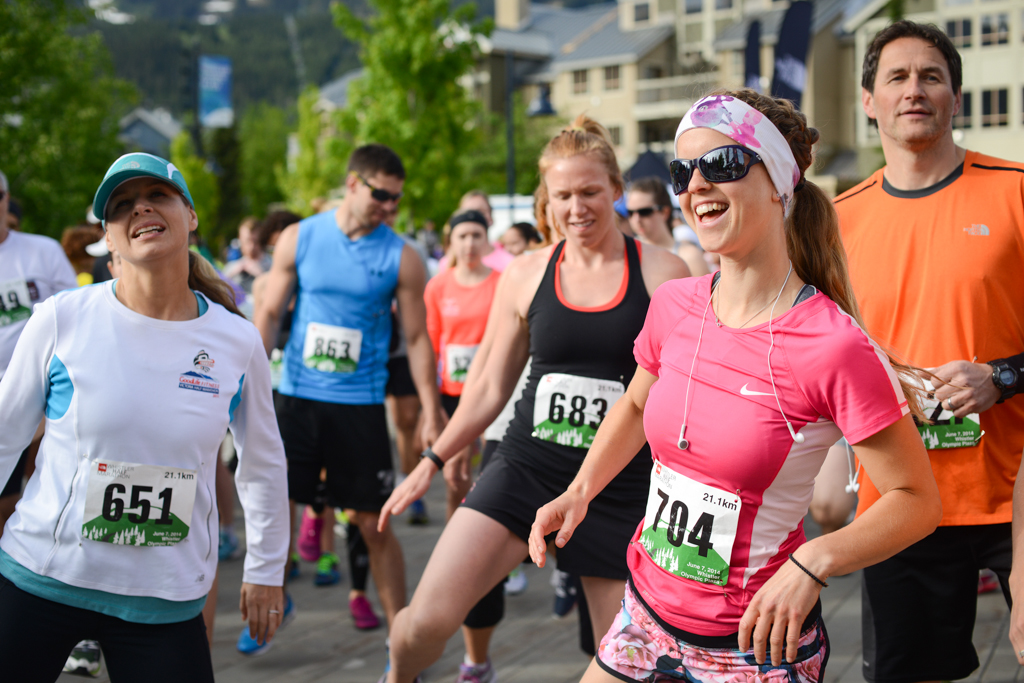Five running myths busted

 Running has become a popular and important health-promoting activity for tens of thousands of Canadians. It is relatively inexpensive, can be done almost anywhere, and at all times of the year (unless you live in, say, Winnipeg). There are many benefits of running — as little as once or twice a week —to your overall health and well-being and running can also be a fun and social activity to share with family and friends.
Running has become a popular and important health-promoting activity for tens of thousands of Canadians. It is relatively inexpensive, can be done almost anywhere, and at all times of the year (unless you live in, say, Winnipeg). There are many benefits of running — as little as once or twice a week —to your overall health and well-being and running can also be a fun and social activity to share with family and friends.
However, there are a few myths and misconceptions that continue to exist among the general public. It’s important to know the truth and to share the facts as to prevent others from being discouraged. Here are but a few common myths that relate to running, and the truth behind them.
 Myth #1: It’s bad for your knees, or your joints, or your heart, etc.
Myth #1: It’s bad for your knees, or your joints, or your heart, etc.
We’ve heard it all before, that running will “ruin your knees,” “destroy your joints,” and possibly give you a heart attack. This simply isn’t true. In fact, a growing number of scientific studies have not only shown that this isn’t the case, but that running can actually increase the strength and durability of our bones and joints and actually protect you from age-related osteoarthritis. Anecdotal tales of runners having heart attacks and suffering from heat stroke, as tragic and sad as they may be, are incredibly rare and unlikely. These events — known to occur 1 in 100,000 or more cases — often result from undiagnosed and genetic heart defects and predisposition. In sum, the benefits of running greatly outweigh the risks and the naysayers are wrong.
Myth #2: You’ll lose weight
While running is one of the most effective means of expending energy and burning calories — about 60 per every kilometre run — it is far from a guaranteed weight loss fix. Losing, gaining and maintaining weight is mostly about overall energy balance: how much energy you intake from food and drinks compared to how much you expend throughout the day. Unfortunately weight loss doesn’t follow perfect or ideal metrics and just because you may be expending more energy than you take in, it doesn’t necessarily mean you’ll lose weight. The body tends to protect and maintain a certain “set point” and even with a dedicated decrease in intake or increase in activity, losing weight may take time and continued effort. Luckily, running and other strenuous activity is known to suppress appetite and better regulate hunger hormones.
 Myth #3: You can eat anything, all the time
Myth #3: You can eat anything, all the time
As you read above, running only expends so much energy per distance or time spent, and this can quickly and easily be cancelled or exceeded by what we choose to eat and drink. While it is important to be properly hydrated and fueled for running, as well as to refuel and hydrate after a long or hard run, most runs don’t require any additional energy before, during or after. An easy 5K or 30 minute run only burns about 300 kcal, which can quickly be covered with a post-run snack or beverage. Be aware of your caloric intake before and after you run, and be careful not to over-eat as a reward for your running.
Myth #4: It’s boring
“Left foot. Right foot. Repeat.” Nothing to it, right? That all depends on your state of mind. Running is a great way to see new places, meet new people and take on a new and exciting challenge. While running at the same time, on the same days, and perhaps even in the same (local) places may be inevitable due to schedule constraints, changing up your running routine is as easy a trying a new workout, finding a friend to run with or changing your route. Better still, set an ambitious goal and do what it takes to achieve it. Whatever it takes, make it fun. Running should be something you want to do and only by enjoying it, are you likely to stick to it.
 Myth #5: You have to be fast to run
Myth #5: You have to be fast to run
Despite what the popular book title says, no one was “born to run.” Some people definitely have more inherent and natural ability and may require less time to find their feet, but we all start somewhere and it’s usually very slow. Anyone can learn to run and starting is relatively simple. Run for as little as you want and take regular breaks for recovery. As you become used to what it feels like to run, add more minutes to each run and go a bit further than you did before. Eventually you may want to add more days of running and even try different workouts — intervals, hills or fartlek — to test and improve your fitness. A kilometre is a kilometre, no matter how long it takes.
 Myth #1: It’s bad for your knees, or your joints, or your heart, etc.
Myth #1: It’s bad for your knees, or your joints, or your heart, etc. Myth #3: You can eat anything, all the time
Myth #3: You can eat anything, all the time Myth #5: You have to be fast to run
Myth #5: You have to be fast to run

